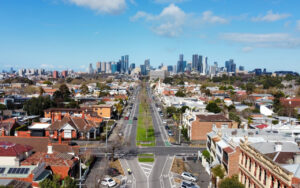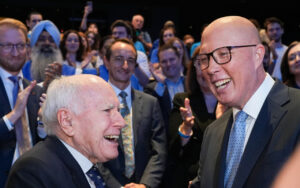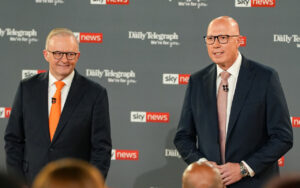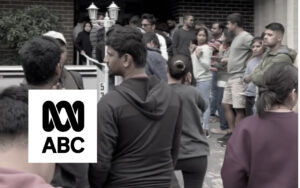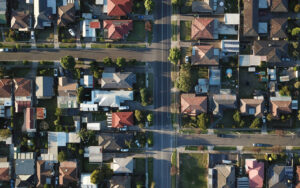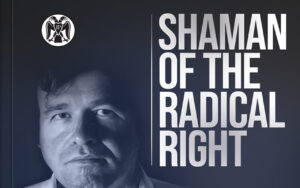It’s no exaggeration to note that everything is now left-wing.
Politically, the ALP is in every major office on the mainland while the Greens had their “best result ever“ at the last federal election. Socially, left-liberalism is our new civil religion with diversity holding a theological status akin to Christianity. Indeed, pride parades and foreign festivals roll around as regularly as the tides.
Why is this?
An assortment of reasons have been offered. One is the longer-term shift from a hard rural existence to an easy urban one, with half of humanity now living in cities. There is also the related transformation from a more male-oriented society to a female one. As technology has rendered masculinity less important, feminism and a more feminine ethos have emerged and have helped women dominate fields like education. More liberal, feminine mores have thus taken hold.
Yet the most obvious explanation is the one that can’t be named: that is, of course, diversity via mass migration. The simple fact is that immigration – with Australia receiving over seven million migrants since the year 2000, from a varied range of sources – is the driver of our leftward shift.
This is apparent in a range of domains. But it’s especially apparent in the commercial. Rare until recently, corporate cosmopolitanism is now all pervasive. Beer brands, for instance, no longer market their products to the local man but drape themselves in diversity and the rainbow flag. Corporations chase social minorities through strategies like “pinkwashing”. Even prosaic products are sold via the pluralist template that was only once seen in United Colours of Benetton ads. This over-representation of ethnic minorities is so ubiquitous it has become a cliché. So common is it, the term “Woke Capital” was coined to describe it in 2018.
This shift is also seen in our civic life. One need only recall that our cities were the sites of serious social discord stemming from the George Floyd killing and BLM riots in 2020. Added to this, our statues and monuments are routinely destroyed or desecrated. Even our islands, councils and streets are renamed according to the latest leftist imperatives.
All this has only accelerated since last October and the latest Israel-Palestine conflict. Hardly a day now passes without one related incident or another. There have been weekly pro-Palestine protests in our cities. There has also been widespread vandalism of MP offices, including the firebombing of the office of Jewish MP, Josh Burns. We need only compare this to the more muted local responses to previous Arab-Israeli wars to note that something major has changed in our civic life.
This is all in contrast to life in more homogenous lands. Japan, for instance, has seen none of the tensions witnessed here and abroad. Hungary – that bete noire of the global left – has also remained relatively stable amid the upheavals afflicting its nearby neighbours. Indeed, in a dark historical irony, “far-right” Budapest is now a safer site for Jews than either Paris or London.
Yet the primary effect of immigration is in politics. Quite simply, mass migration has heavily favoured the left and pushed us strongly in that direction. As evidence, consider our two most populous states. In New South Wales, the ALP dominate the huge and highly diverse region of Western Sydney. In fact, you can travel from Maroubra to Rooty Hill without leaving a Federal Labor seat. The only real exception is Fowler: an electorate held not by the LNP, but by ethnically-Vietnamese Independent Dai Le. Indeed, as the ABC reported after the ALP won last year’s NSW state election:
“Labor can, in part, thank Sydney’s west for its surge to form majority government for the first time in 12 years”.
It’s worse in Victoria. Federally, all of Melbourne’s north and west is controlled by Labor while the centre, south and east of the city are in the hands of either The ALP, Greens or Independents. Things are so bad for conservatives in Melbourne that the Liberal Party holds just three of some twenty seats, and all of them are in the city’s outer-east.
If it’s not the ALP, much of the country is controlled by the Greens or other leftist entities. Bob Brown’s creation, once thought an absurdity, now has four lower-house seats, with the party picking up three in Queensland at the last election. The Teals occupy a further six, with the federal crossbench expanding from six to sixteen seats. This has largely occurred at the expense of the right, with the Coalition seeing its “lowest seat share since 1946”.
Yet this is all a part of a deeper shift driven by liberal ideology, diversity and immigration. As an ANU report into the 2022 election illustrates, Australia’s increasingly diverse young are foregoing the right. As the paper notes, the LNP vote “fell in almost every age, but especially among the youngest cohort of voters” – as only “one in four voters under the age of 40 reported voting for the Coalition”. A trend that is a record in the authors’ 35 years of analysis: “At no time” have they seen “such a low level of support for either major party in so large a segment of the electorate.”
To make matters worse, the report adds that this won’t improve as these cohorts age: with “maturation effects …at best mild drivers of political preferences”. We’re therefore left with the conclusion that this leftward drift is due more to demography than it is age.
We can confirm this by looking at America. In the US, African-Americans favour the left-leaning Democrats at a rate of around nine to one. Hispanics also tilt left at a supermajority level. Asian Americans, too, vote for the left at a 60-40 split. The right-leaning Republicans, remember, have only won the popular vote once in the last twenty years.
These trends are also seen here. ALP-aligned pollster Kos Samaras, for instance, has noted that migrants favour the ALP at a 20% higher rate than other parties. Electoral data among Chinese Australians also proves this point. At the last federal poll, several “electorates with high Chinese-speaking populations saw big swings to Labor”. A stance that was repeated in the New South Wales and Victorian state elections, and in the federal by-election in the seat of Aston.
For the right, things are dire among minorities and the young. To return to the ANU study, Millennials – born between 1981 and 1996 – have shrunk their support for the Coalition from some 35 percent twenty years ago to 25 percent now. The even younger Gen Z – born after 1996 – are much the same: opting for the Coalition at around 26 percent. Indeed, within this group: “67 percent voted either for the Greens or Labor”.
Two thirds of our young are thus voting for the left and only a quarter for the Coalition. A situation that isn’t likely to change and which obviously bodes badly for the right. As the report notes, this leftist bias is “perhaps the biggest single question confronting Australian politics”.
As bad as this all is, it shouldn’t be a surprise to anyone paying attention to events abroad. Indeed, the excellent American writer Helen Andrews published an insightful piece a few years ago on the dramatic effects immigration has had on her homeland. Citing a report by the National Bureau of Economic Research, Andrews outlines how migration has pushed America “permanently to the left”.
The paper illustrates how the Ellis Island migration wave at the start of the 20th century not only pushed America left then, but how it has kept it there until now. As the report notes: “counties with high levels of immigration between 1900 and 1930 were more likely to be liberal today, nine decades later.”
A trend that events like urban development did little to change. The study “found that even controlling for factors like industrialization and urbanization, residents of these counties were more likely to favor redistribution, oppose spending cuts, and identify with the Democratic party”. Leftism, therefore, is baked into the immigration cake.
More importantly, and in contrast to the oft-repeated claim that wealth shifts immigrants to the right, increased income does little to change migrant preferences. To take one example: “South Asian immigrants are wealthier and more educated than natives on average, and they favor Democrats as lopsidedly as Hispanic immigrants do.”
So much for our view, then, that our Liberal Party is the “natural party of business” for one and all.
Yet in what is the starkest indictment of the delusions of the Liberals and the establishment right and their dreams of a multiracial coalition, nothing the establishment does really matters. As Andrews notes: “immigrant attachment to the left has very little to do with anything the opposition party does.” Indeed: “Immigrants and their descendants consistently favor Democrats, regardless of whether the GOP candidate has courted them”.
As Andrews summarises: “the problem isn’t anything Republicans have done or failed to do. The liberal advantage is simply built in.” A stance we can confirm here with Labor’s current dominance and which we’ve specifically seen in Victoria. As no matter whether Victorian Liberals adopt a “tough on crime” approach – as per 2018 – or a “Labor-lite” approach – as per 2022 – the end result is the same: another heavy loss and another four years of the ALP.
The cause of our pervasive and interminable leftism, then, is demography. We already have one of the highest foreign-born populations in the world, and our largest city of Melbourne is on track to soon be “majority-minority”. A stance that explains Labor’s dominance and why places like Victoria have become one-party ALP-run states.
Demography is indeed destiny, and this explains why everything is liberal or left-wing.





